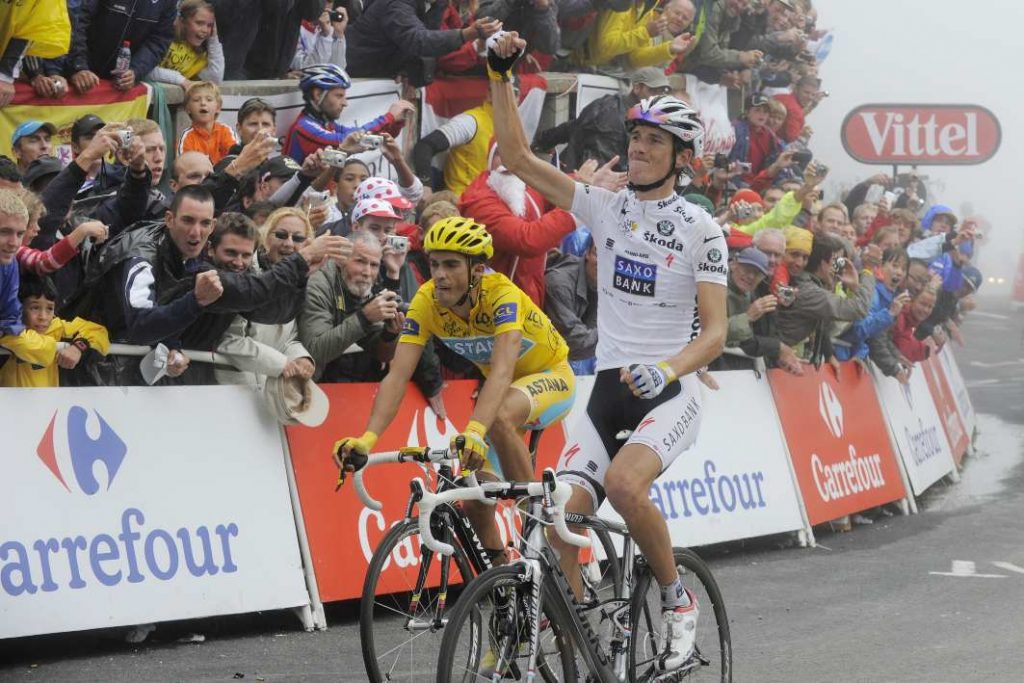“The world moves really fast. Unfortunately, when I was a pro rider, we didn’t have Zwift. So, my training at home was just a basic home trainer and a fan. We invented all kinds of systems to try and make it not as boring,” Andy said when asked about his own home training.

Should you use your PlayStation when training indoors?
“We would try things like watching a moving while riding or even playing on a PlayStation! But I soon found out that none of those things really worked. I couldn’t concentrate on my training while doing those things,” Andy continued. That meant his training setup was very basic in the end. Just a home trainer, a fan for cooling, and some music. That was the only way to properly go through all the required training indoors.
I become an addict when I start “Zwifting”
“Today, everything has changed with platforms like Zwift, BKool, FulGaz, and many others. This can actually make indoor training a fun thing. Before, indoor training was the most boring and painful part of the preparation as a pro cyclist. I still prefer riding outside but if you’re in a lockdown or if the weather doesn’t allow for outdoor training, this is definitely an effective and fun alternative. When I get into it and start “Zwifting”, I become an addict after two rides,” Andy laughs. “I sign up for competitions. I try hard to beat the others. I have friends that use Zwift every week or even every day. I have to say, big thanks to Zwift for inventing this before [COVID-19] came.”
Turbo trainer or rollers?
“I believe rollers are good when you just want to spin your legs. Maybe for a warm-up before a time trial or an easy recovery workout at home just to get your legs moving. But to do a proper workout, it simply doesn’t work because you can’t add enough resistance. It’s like you’re just riding flat with a backwind. And you don’t get in shape with flat roads and backwind,” Andy smiles. “But some modern rollers do allow you to add some limited resistance and they give you a more realistic feel. You can move left and right more than on a fixed home trainer.”
You can simulate climbs indoor

“Nowadays, you can really have a variety of indoor training setups. For example, you can get the CLIMB from Wahoo, which attaches to your front wheel and helps simulate climbing by lifting your front fork. Some people think it’s just a gimmick but if you want to simulate climbs at home properly, it’s not a bad thing to have. Even if you set the right resistance on a regular trainer, the position on the bike stays the same as riding a flat road. With the Wahoo CLIMB, your position changes, which means you use your muscles differently, just like on a real climb,” Andy explains.
Pay extra attention to hydration
“You should have a lot of water or some isotonic drink at hand because you do sweat a lot, more than when you ride outside. That way, you don’t have to stop your training in the middle. A fan can create the feeling you sweat less because it feels cooler but the temperature in your room is still the same even with a fan. So, be careful to stay hydrated while you do the workout,” warns Andy. He also recommends having a towel on the bike to deal with the sweat.
Nutrition for indoor training
“A long indoor training session for me as a professional was 2 hours. Sometimes, I would do 2 hours in the morning and 2 hours in the afternoon but never more than 2 hours in one session. And the average indoor workout for most people will usually be around 1 hour. I believe that if you have a healthy lifestyle and you eat properly throughout the day, you don’t need to eat during that 1-hour session. But if you do a monster session at home of 4-5 hours, then you do need to eat something,” Andy says.

Training core stability in winter
“As a pro, you need to work on your overall fitness, not just your legs and lungs. Especially the off-season in winter is when you can work on your core stability. It’s what keeps you straight on the bike. It’s what keeps you from crashing and helps you avoid injuries. And that’s what I used to do, a lot of core training and weight lifting to train the other parts of my body, which I didn’t have enough time to train during the season,” Andy describes. “Winter is also when I was able to sometimes go for an early morning run to stimulate different muscles than with cycling. And I would also do some swimming as a workout for the lung muscles and to improve lung volume.”
Cycling and staying in shape while busy
“Now that I’m not a professional cyclist, I’m quite busy with other things than cycling. But I still love cycling. I don’t do it for the workout, I ride just because I enjoy it. And I use it to socialize with different people. It’s the most social sport in the world, I believe. I also swim a lot – that’s also my sport today. I like it because, in 1 hour, I can do a real workout whereas on the bike 1 hour is not really enough for me. I can’t really run anymore because of a knee injury but I do take my dog for very long walks in nature,” Andy describes how his sports activities have changed since retiring from professional cycling.




